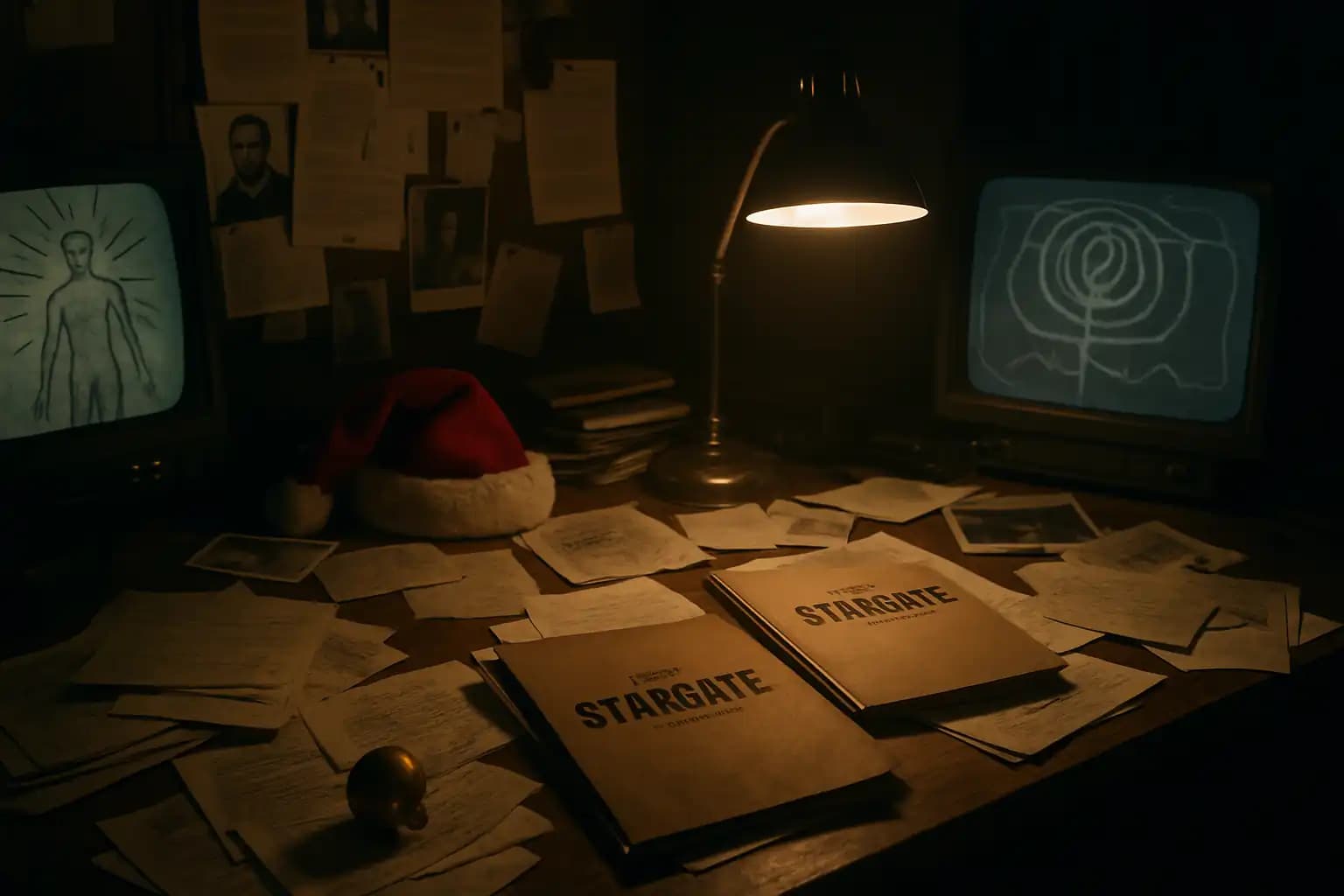Let’s examine remote viewing’s sensational claims critically. From the CIA’s Stargate archives to current influencer psychics, the field’s flaws remain persistent: legend often surpasses verification, and misinformation spreads rapidly, particularly when experimental design falters. This issue transcends Cold War trivia. As interest in UAPs (unidentified aerial phenomena) reignites military and civilian circles, remote viewing’s problems of bias, target quality, and signal-to-noise ratio resurface.
The Stanford Era: Stargate, IRVA, and the Limits of Psychic Espionage
Remote viewing’s modern chapter began at the Stanford Research Institute (SRI) in 1972. Physicists Hal Puthoff and Russell Targ, along with astronaut Edgar Mitchell, initiated formal psi experiments in collaboration with the CIA’s soon-to-be infamous Stargate Project. A significant historical review shows how secrecy, funding pressures, and “psi gifted” subjects shaped a unique research culture. Some participants—like Pat Price and Ingo Swann—achieved uncanny hits on occasion, but independent analyses found clues and cues (including references to dates and site order) embedded in test materials. This added unconscious bias and ambiguity to outcomes. Later evaluations, reflected in encyclopedic surveys of remote viewing, emphasize that the original SRI experiments struggled to eliminate sensory leakage and interpretation drift. Despite formidable personalities and charismatic founders, the International Remote Viewing Association (IRVA) and successor organizations have not moved remote viewing out of the scientific fringe.
This institutional journey mirrors the broader skepticism seen in legendary myth-busting, as detailed in in-depth analyses of pseudoscientific legends.
HRVG, Project JEDI, and the NLP Influence on Methodology
Methodological innovation often creates challenges. The Hawaii Remote Viewers’ Guild (HRVG), forming in the late 20th century, integrated Neuro-linguistic Programming (NLP) with military-style reporting—specifically the US Army’s “SALUTE” framework (size, activity, location, unit, time, equipment, remarks)—to formalize target assessment. According to the IRVA, HRVG’s method employs subconscious priming, visual ideograms, “blackboard” visualization, and progressive sensory intake, striving for greater rigor than classical “psychic” practices (IRVA, 2024). However, experts warn that each new layer—from NLP to “Project JEDI” hybrids—introduces fresh avenues for bias. The more intricate the methodology, the higher the risk if feedback is unclear or tasking (the process of defining the target) suggests covert bias. This aligns with modern skepticism about algorithmic bias, as examined in AI and cognitive bias features.
Misinformation, False Targets, and the Infamous ‘Santa Claus Tasking’
The most glaring issue in the community is its history with spoof targets. Misinformation flourishes when remote viewing groups employ whimsical or “impossible” targets, like the so-called “Santa Claus Tasking.” This originated as a joke but occasionally produced convincing, albeit illusory, ‘hits.’ Reports from a widely cited broadcast (Coast to Coast AM) reveal that even respected practitioners described details like sleigh bells and red suits. The structure and cues of the tasking nudged their subconscious toward fantasy. Such examples highlight the dangers of ambiguous or feedback-less experiments. Recent reviews argue that any field lacking clear target definitions and strong controls attracts both deliberate and accidental errors—reflecting the viral spread of false claims seen in crisis narratives from the true tales archives and economic misinformation cycles in risk briefings.
Why Tasking Quality and Cognitive Hygiene Matter Now
With the mainstreaming of UAPs and the ongoing fringe allure of “remote influencing,” the need for clear, bias-resistant design in psychic research is crucial. Without robust controls, sound tasking protocols, and effective feedback cycles, even well-intentioned experiments risk degrading into tautological noise or, worse, dead ends that fuel the next conspiracy wave. According to IRVA’s official timeline, the community persists in promoting best practices—yet the lessons from the Stanford era still resonate. For every serious attempt, ten more fall victim to uncontrolled “noise.” For those observing the intersection of fringe science and real-world implications, investigative context on technology-driven disasters, flawed perception, and cognitive pitfalls emerges in deep features like tech-aurora crisis reporting and in global change essays throughout Unexplained.co.




